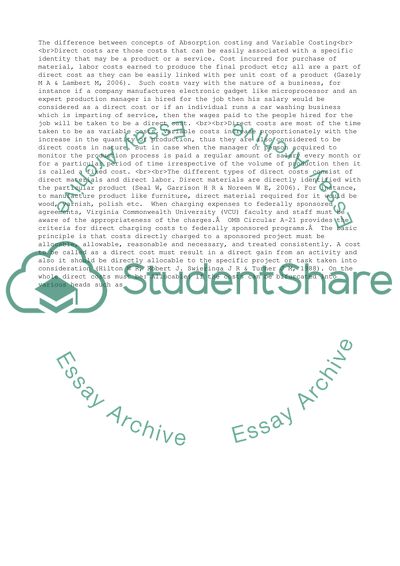Cite this document
(“The difference between concepts of Absorption costing and Variable Essay”, n.d.)
Retrieved from https://studentshare.org/management/1416282-the-difference-between-concepts-of-absorption-costing-and-variable-costing
Retrieved from https://studentshare.org/management/1416282-the-difference-between-concepts-of-absorption-costing-and-variable-costing
(The Difference Between Concepts of Absorption Costing and Variable Essay)
https://studentshare.org/management/1416282-the-difference-between-concepts-of-absorption-costing-and-variable-costing.
https://studentshare.org/management/1416282-the-difference-between-concepts-of-absorption-costing-and-variable-costing.
“The Difference Between Concepts of Absorption Costing and Variable Essay”, n.d. https://studentshare.org/management/1416282-the-difference-between-concepts-of-absorption-costing-and-variable-costing.


